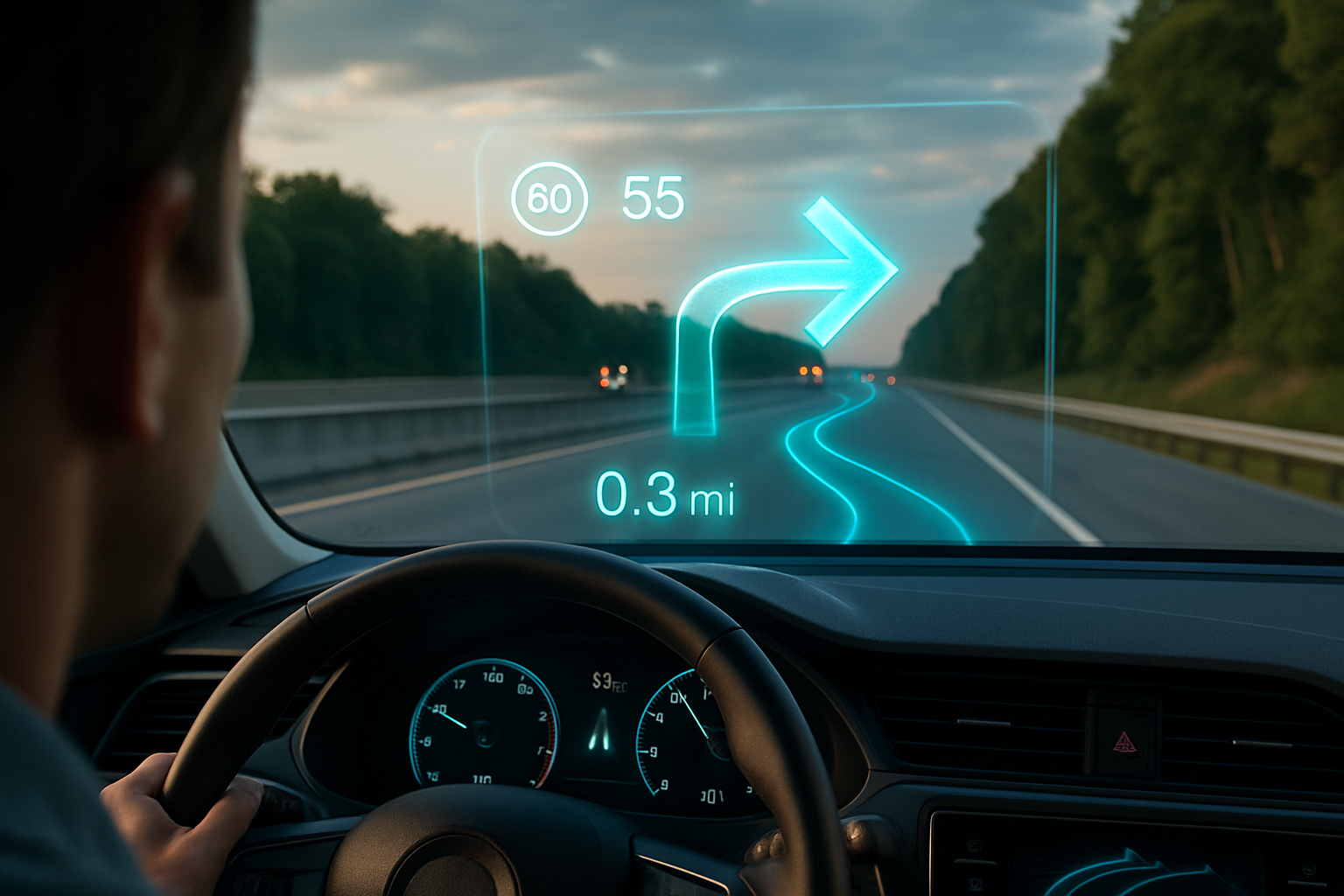Augmented Reality Navigation: Revolutionizing the Driving Experience
In a world where technology seamlessly blends with our daily lives, the automotive industry is on the cusp of a groundbreaking transformation. Imagine a driving experience where your windshield becomes an interactive display, guiding you through city streets with pinpoint accuracy and providing real-time information about your surroundings. This isn't science fiction—it's the future of in-car navigation, powered by augmented reality (AR).

The Evolution of In-Car Navigation
The journey to augmented reality navigation has been a long and winding road, marked by significant technological milestones. In the early days of automotive travel, drivers relied on paper maps and road signs to find their way. The introduction of GPS technology in the 1990s marked a significant leap forward, providing turn-by-turn directions and real-time positioning.
As smartphones became ubiquitous, navigation apps brought even more convenience to drivers, offering features like traffic updates and alternative route suggestions. However, these systems still required drivers to take their eyes off the road to view instructions on a separate screen.
The next evolution came with heads-up displays (HUDs), which projected basic information like speed and navigation cues onto the windshield. While HUDs improved safety by keeping drivers’ eyes on the road, they were limited in the amount and complexity of information they could display.
Augmented reality navigation represents the culmination of these advancements, combining the precision of GPS, the rich information of smartphone apps, and the safety benefits of HUDs into a single, immersive system.
How Augmented Reality Navigation Works
At its core, AR navigation systems use a combination of cameras, sensors, and powerful processors to create a real-time, three-dimensional map of the vehicle’s surroundings. This data is then overlaid with digital information and projected onto the windshield or a transparent display in the driver’s field of view.
The system typically includes several key components:
-
High-resolution cameras that capture the road ahead and the vehicle’s surroundings
-
Sensors such as GPS, accelerometers, and gyroscopes to determine the vehicle’s precise location and orientation
-
A powerful onboard computer that processes the incoming data and generates the AR overlay
-
A specially designed transparent display or projector system that overlays digital information onto the windshield
As the vehicle moves, the system continuously updates the display, ensuring that virtual elements remain accurately aligned with the real world. This creates the illusion that digital information is seamlessly integrated into the driver’s environment.
Enhanced Navigation and Driver Assistance
One of the primary benefits of AR navigation is its ability to provide clear, intuitive guidance that doesn’t require drivers to take their eyes off the road. Instead of glancing at a separate screen for directions, drivers see virtual arrows and signs overlaid directly onto the road ahead, indicating exactly where to turn or which lane to take.
But AR navigation goes beyond simple turn-by-turn directions. These systems can highlight points of interest, display real-time traffic information, and even show the optimal path through complex intersections. For example, in a busy urban environment, the system might highlight pedestrian crossings, bike lanes, or potential hazards, enhancing overall situational awareness.
Moreover, AR navigation can integrate with advanced driver assistance systems (ADAS) to provide additional safety features. For instance, it could visually highlight vehicles in the driver’s blind spots or project a safe following distance onto the road surface.
Enhancing the Driving Experience
Beyond its practical applications, AR navigation has the potential to transform the entire driving experience. Imagine embarking on a road trip where historical landmarks come to life with virtual information as you pass by, or where scenic viewpoints are highlighted with stunning vistas before you even reach them.
For automotive enthusiasts, AR systems could display real-time performance data, such as g-forces, lap times, or optimal racing lines on a track. This gamification of driving could add a new dimension of excitement and engagement to the driving experience.
In urban environments, AR navigation could help drivers find available parking spaces, displaying virtual markers over open spots. It could also assist with parallel parking by projecting guide lines onto the road surface, making even the trickiest parking maneuvers a breeze.
Challenges and Future Developments
While the potential of AR navigation is immense, there are still challenges to overcome before it becomes mainstream. One of the primary concerns is information overload—too much data on the windshield could distract drivers rather than assist them. Striking the right balance between providing useful information and maintaining a clear view of the road is crucial.
There are also technical hurdles to overcome, such as ensuring the system works reliably in all weather conditions and lighting situations. The cost of implementing these advanced systems is another factor that may initially limit their adoption to high-end vehicles.
Looking to the future, we can expect AR navigation systems to become more sophisticated and integrated with other vehicle systems. As vehicles become increasingly connected and autonomous, AR could play a vital role in bridging the gap between human drivers and AI-driven systems, providing a transparent interface for monitoring and interacting with autonomous driving features.
The Road Ahead
Augmented reality navigation represents a significant leap forward in automotive technology, promising to make driving safer, more efficient, and more engaging. As these systems continue to evolve and become more widespread, they have the potential to fundamentally change how we interact with our vehicles and navigate the world around us.
While there are still challenges to overcome, the future of AR navigation looks bright. As automakers, tech companies, and software developers continue to push the boundaries of what’s possible, we can look forward to a future where our windshields become windows into a world of information, seamlessly blending the digital and physical realms to create an unprecedented driving experience.
The road ahead is clear, and with augmented reality navigation lighting the way, the journey promises to be more exciting than ever before.





